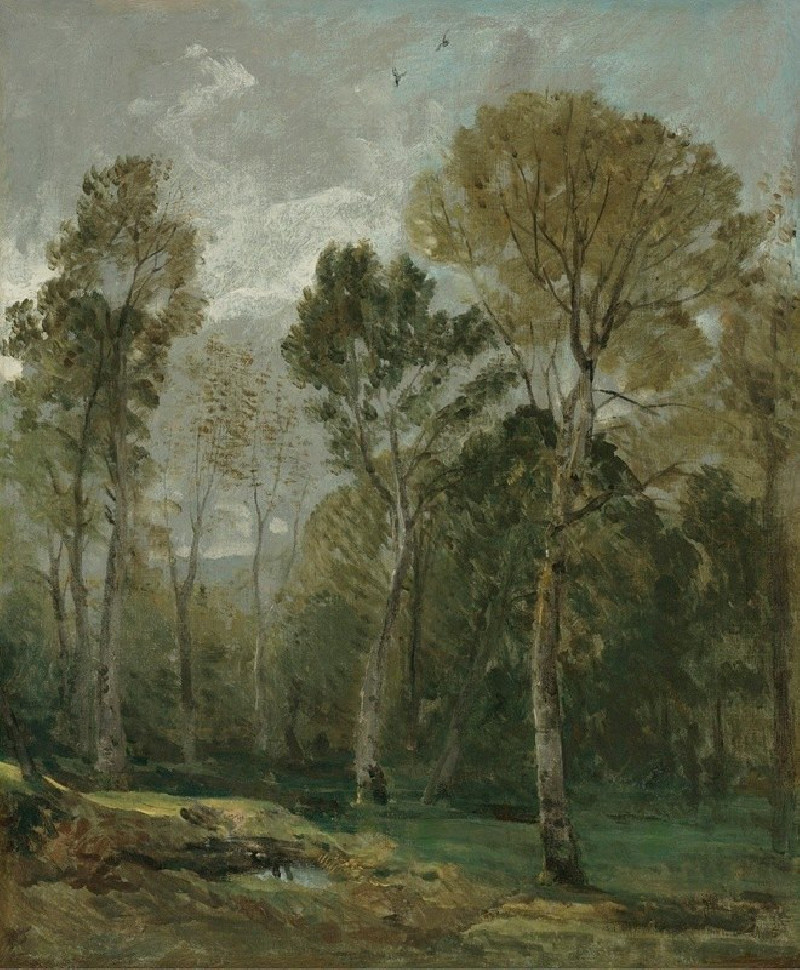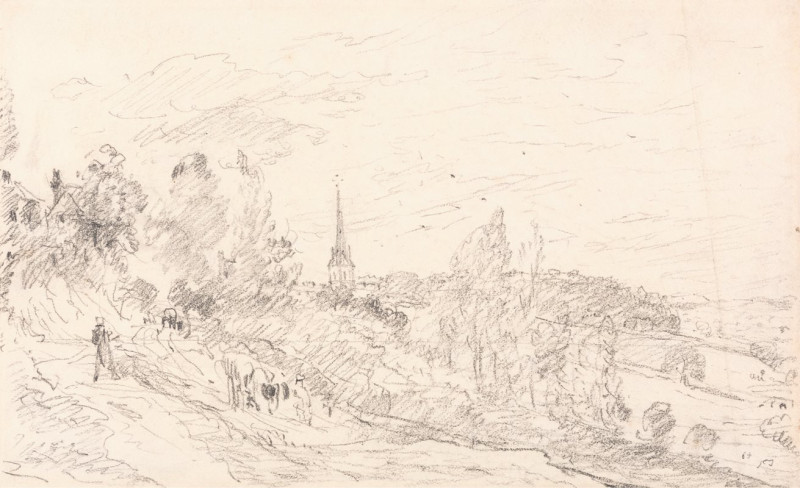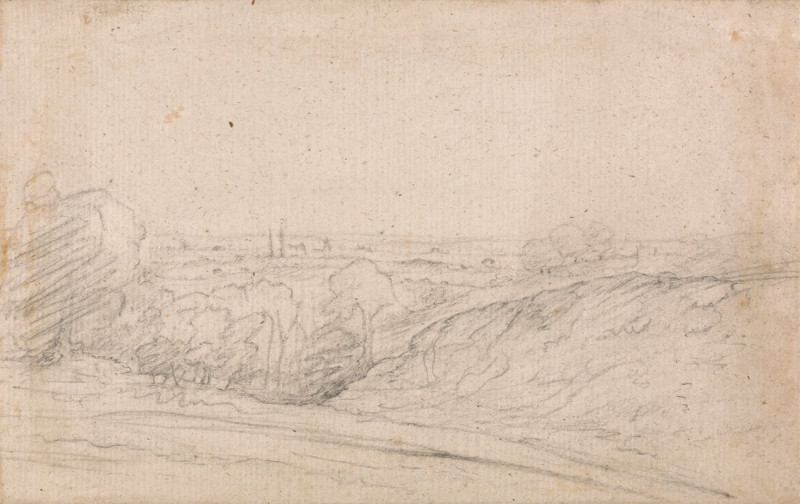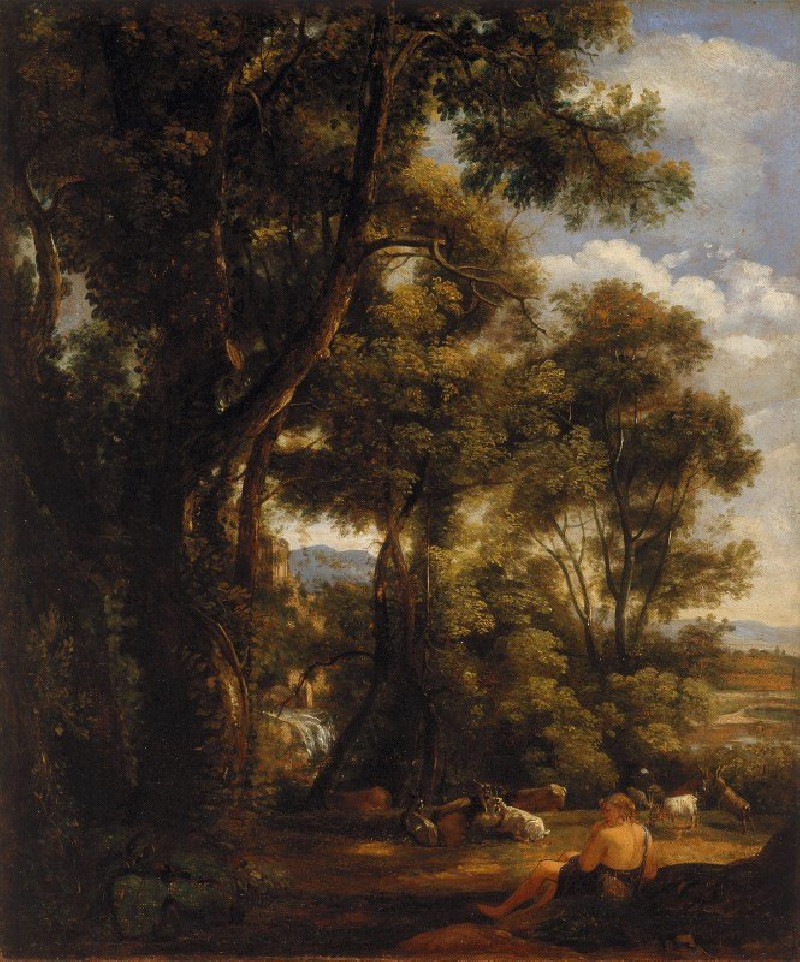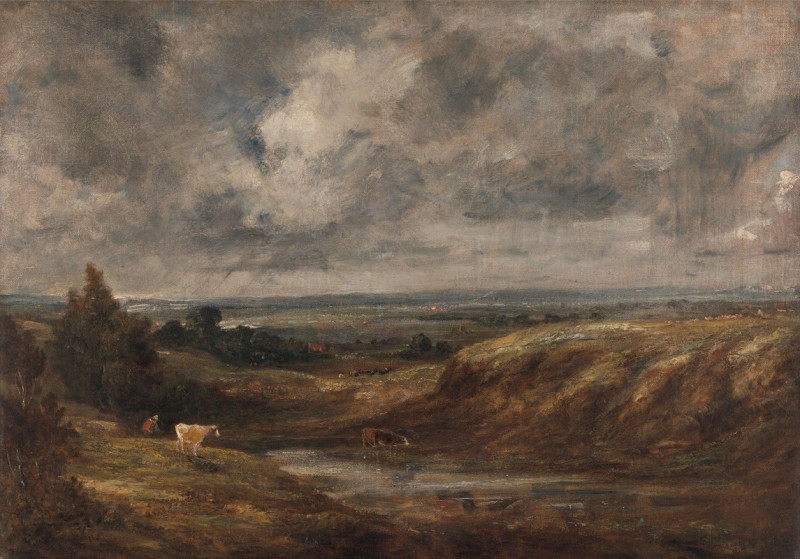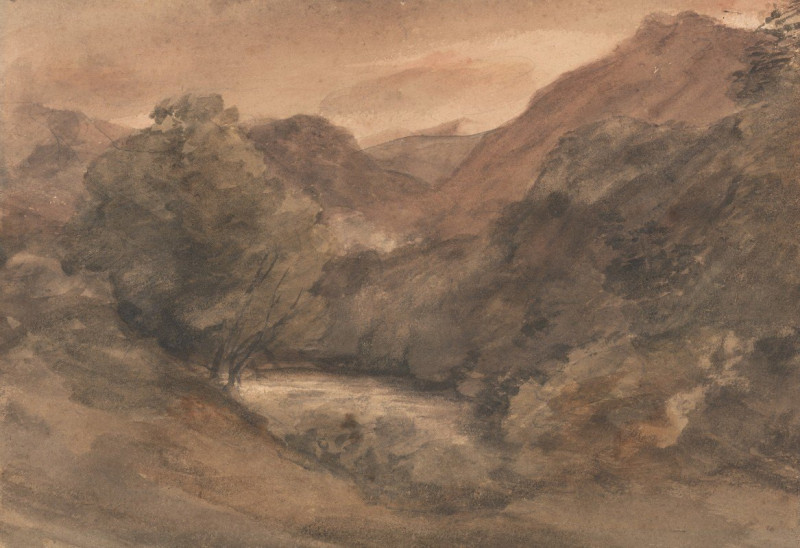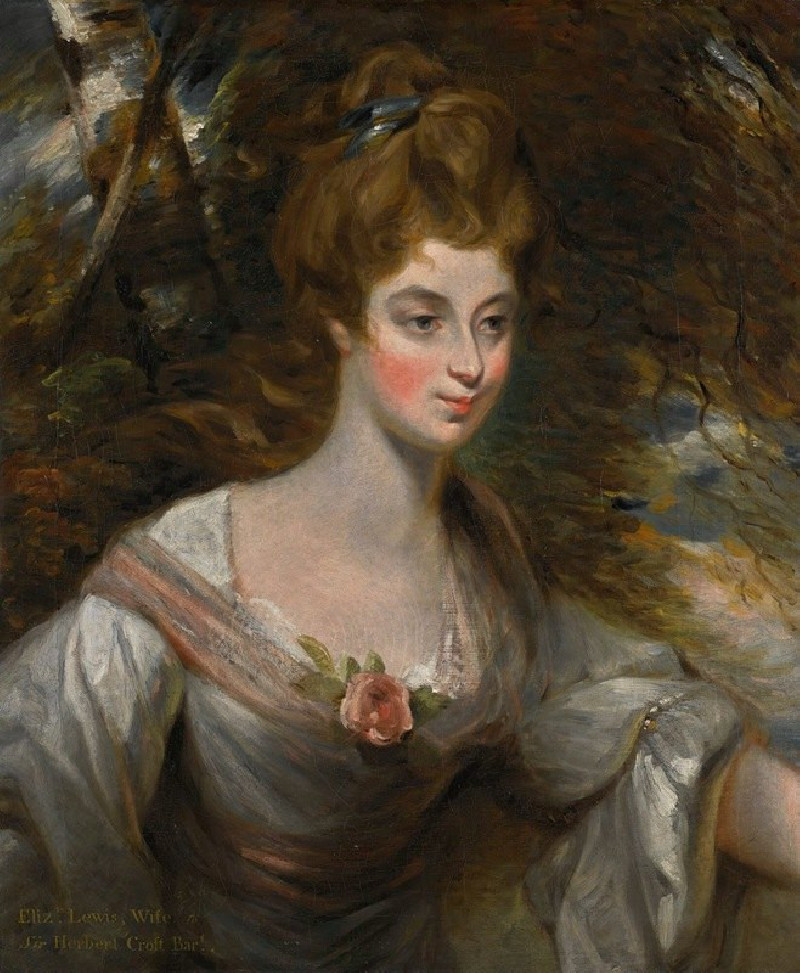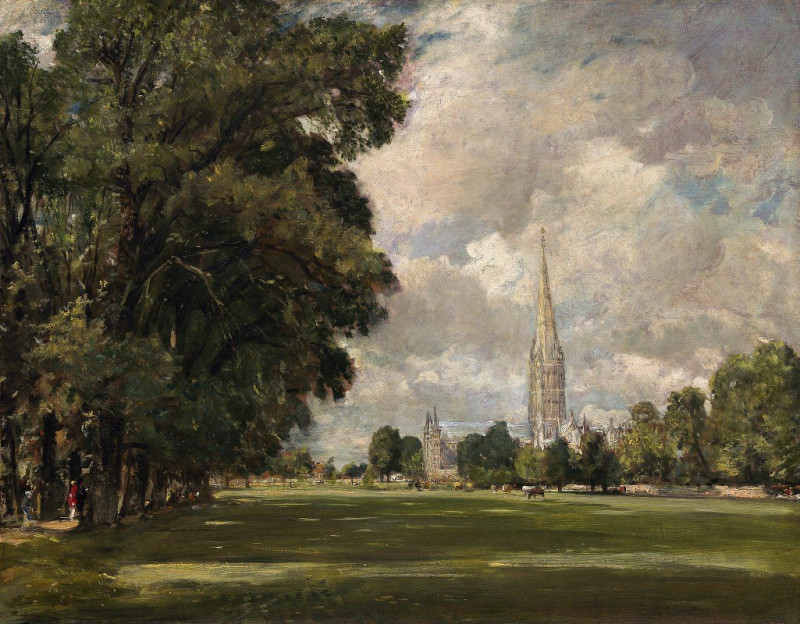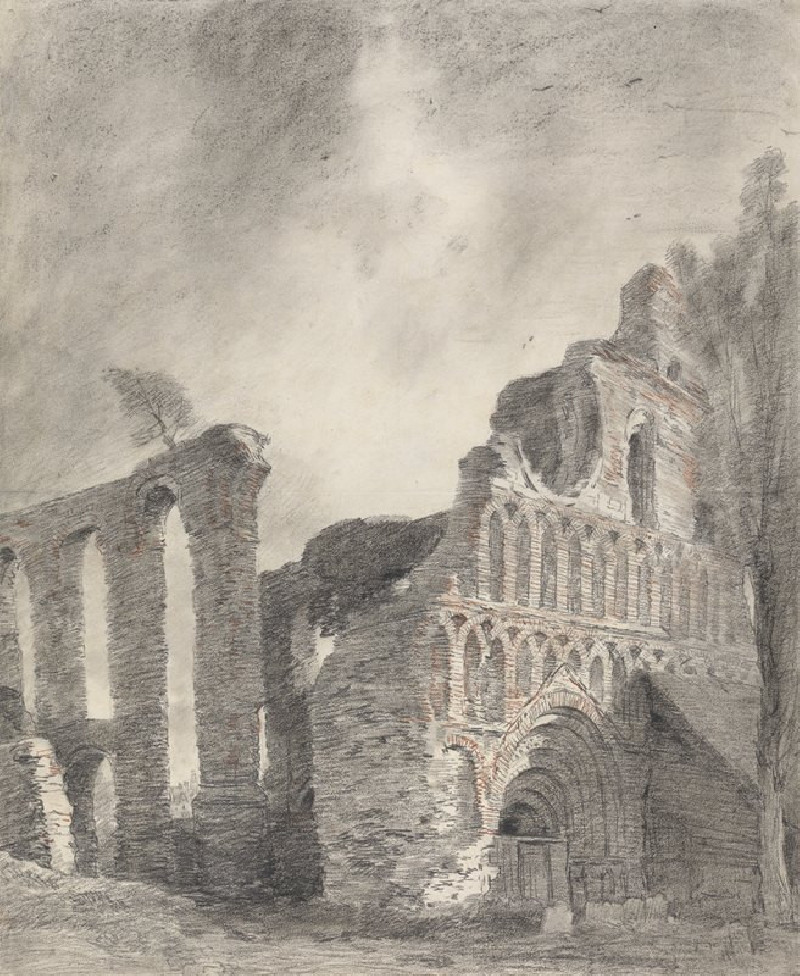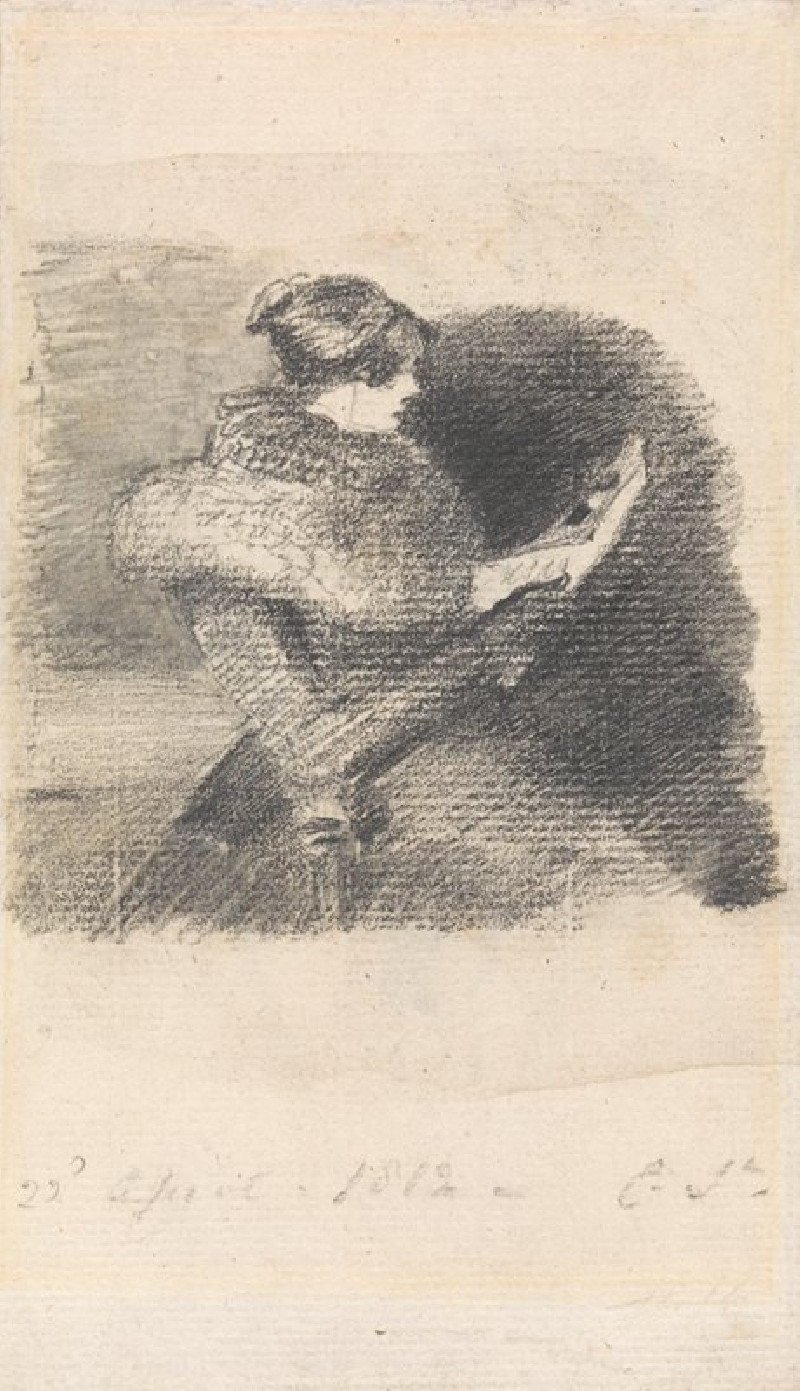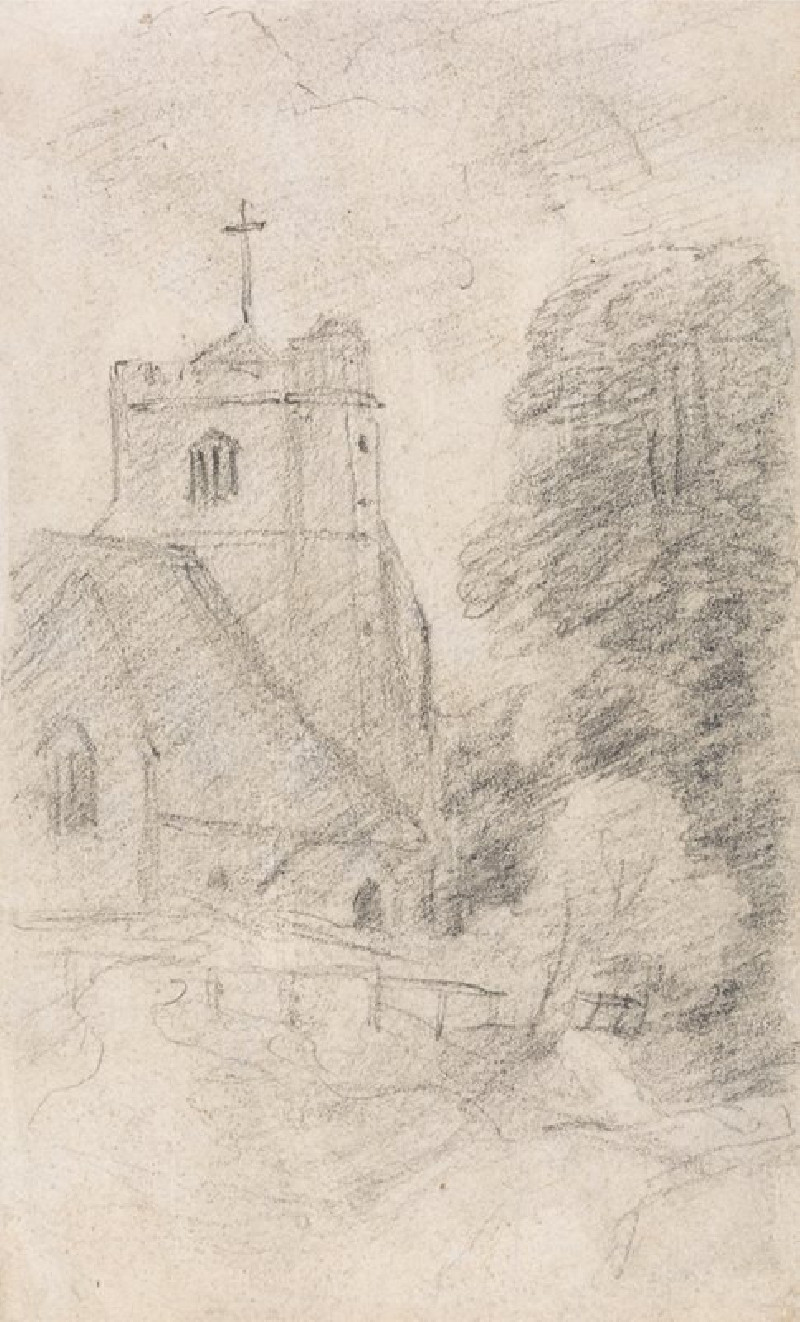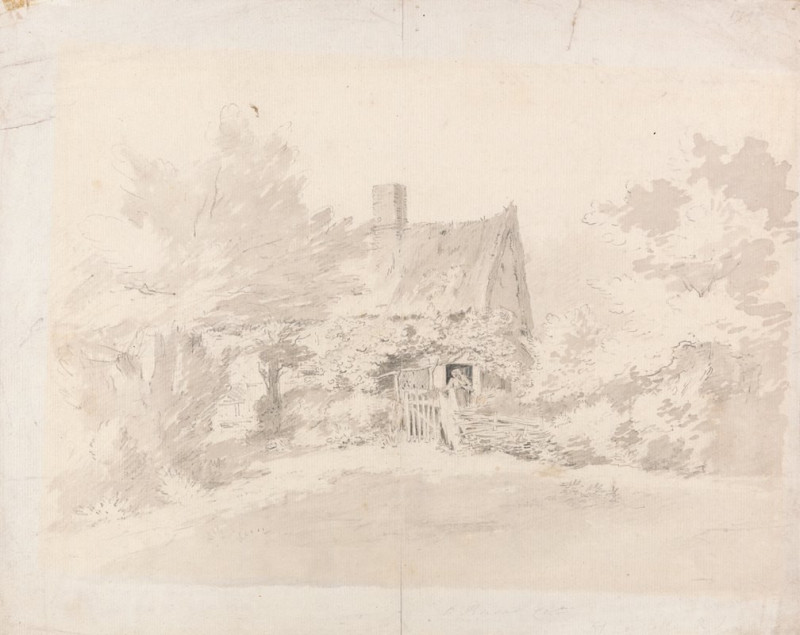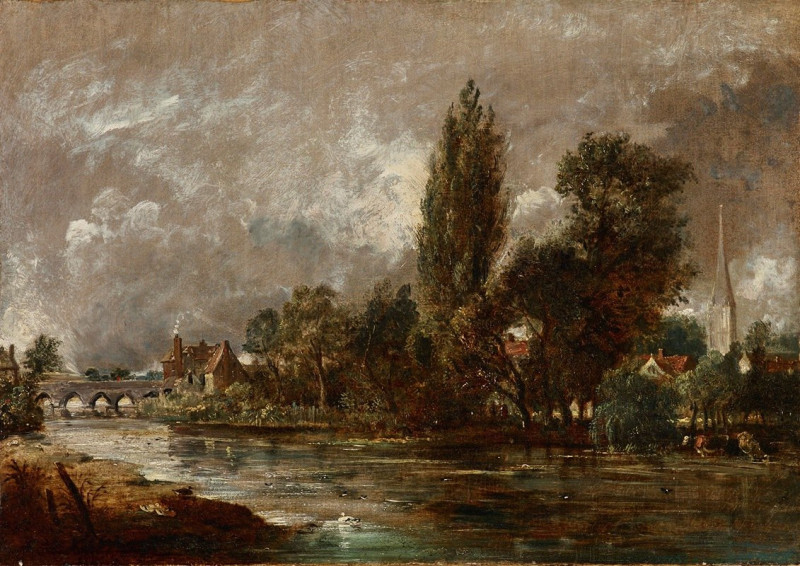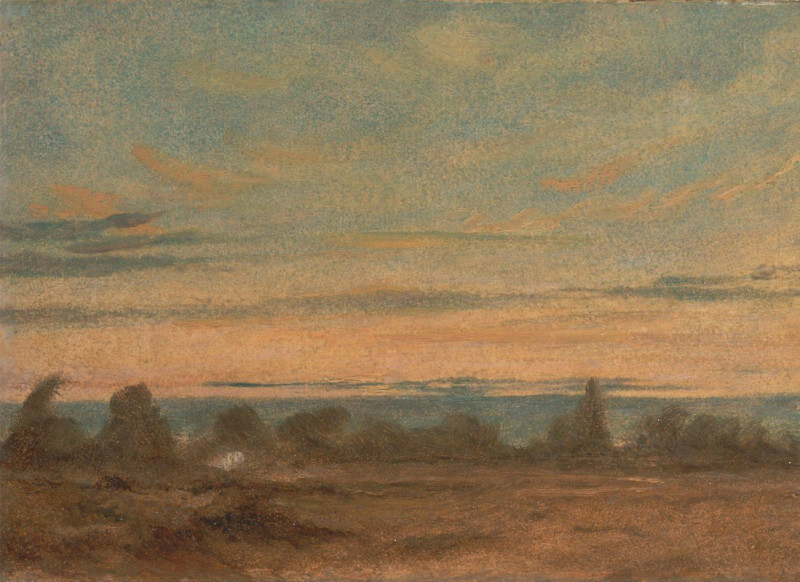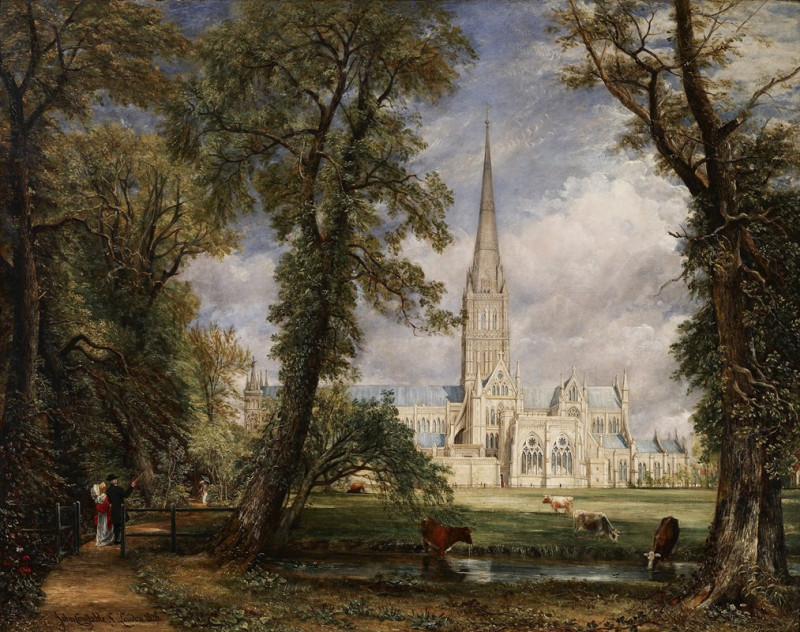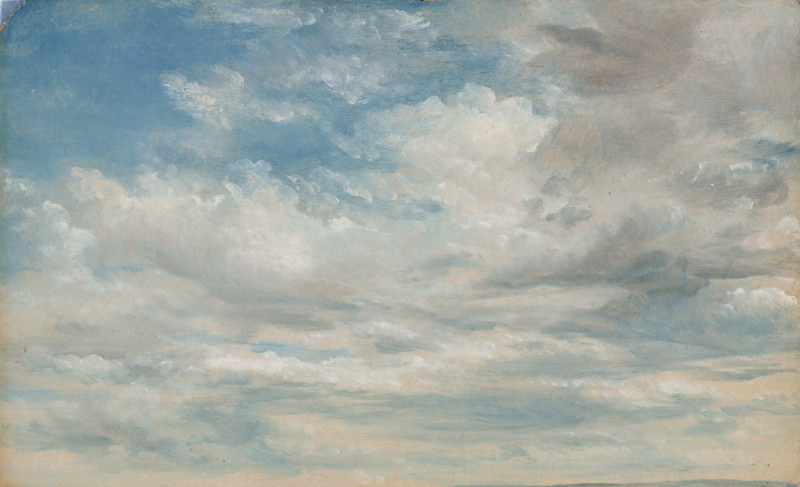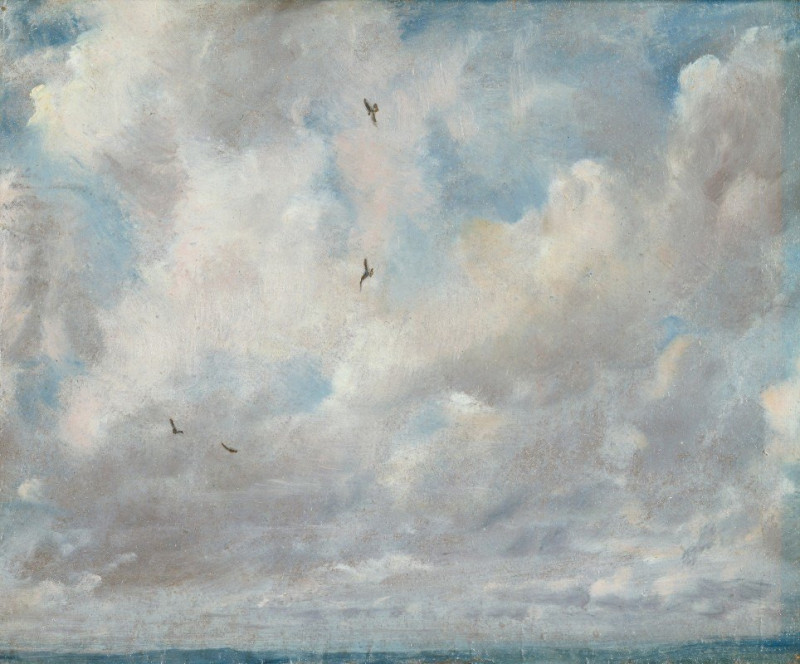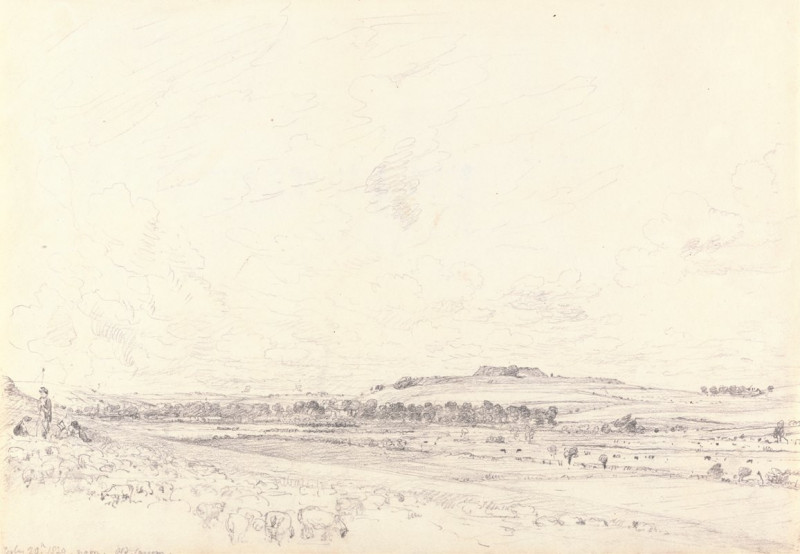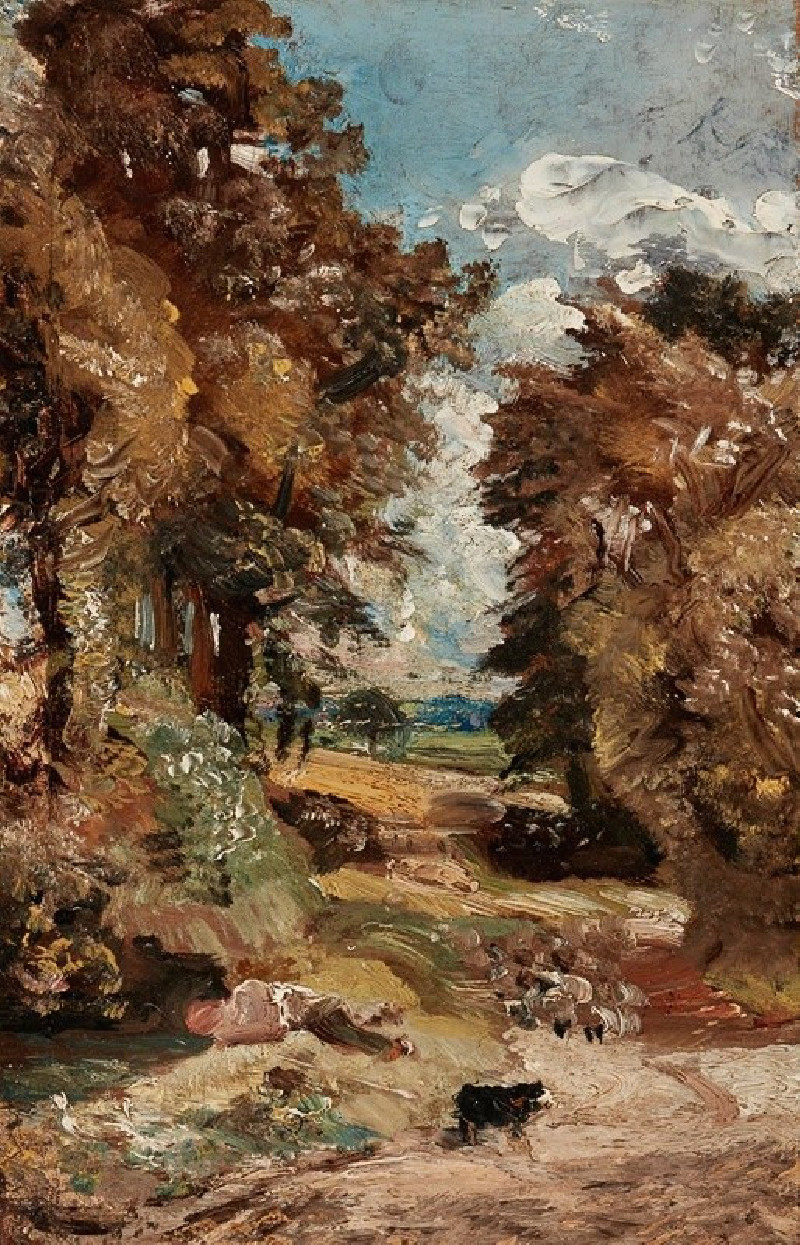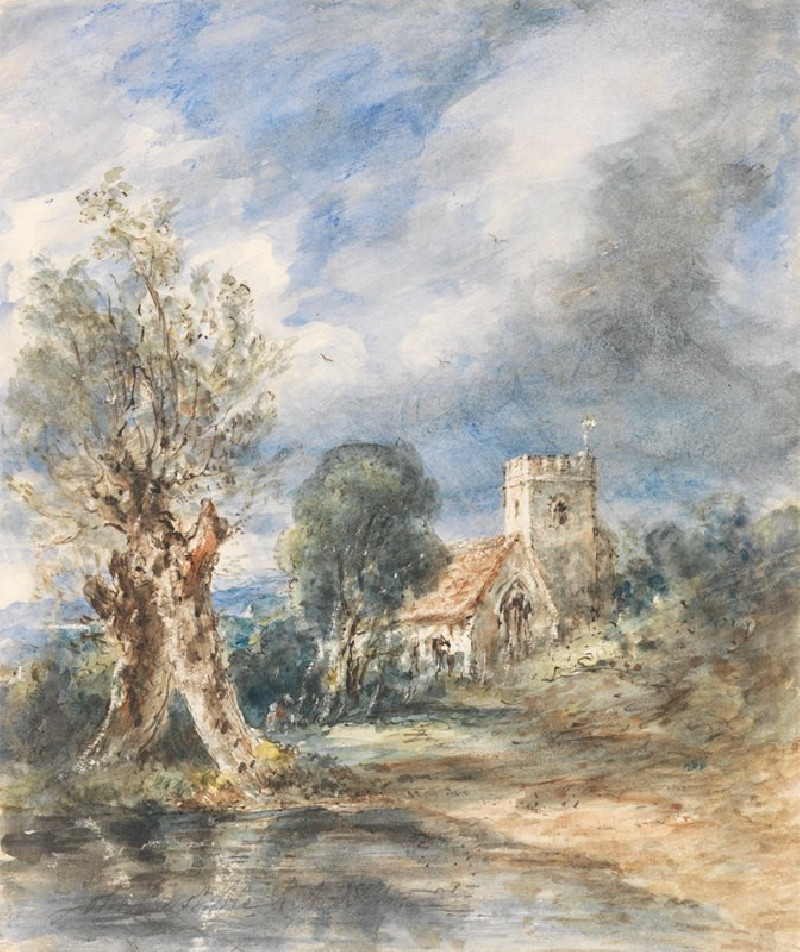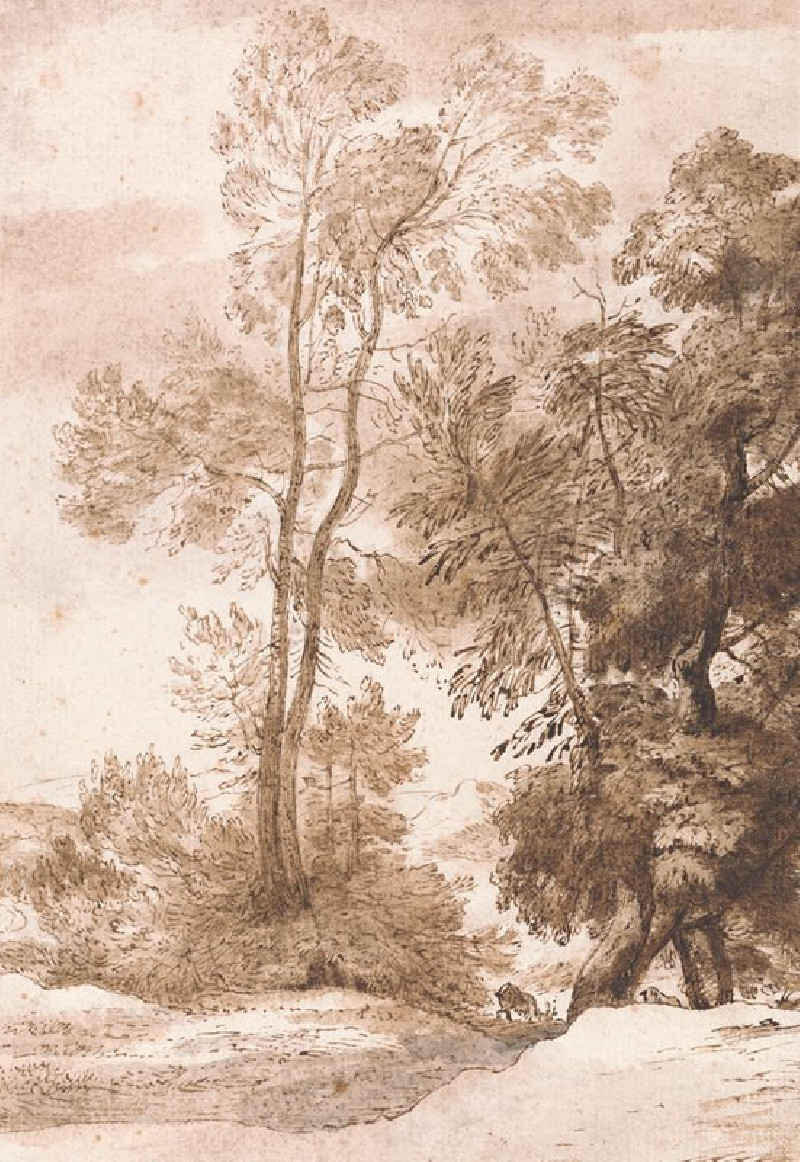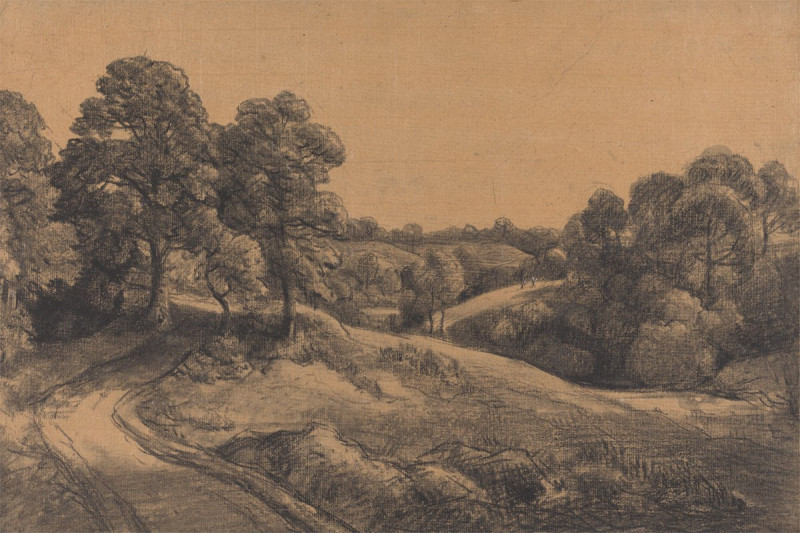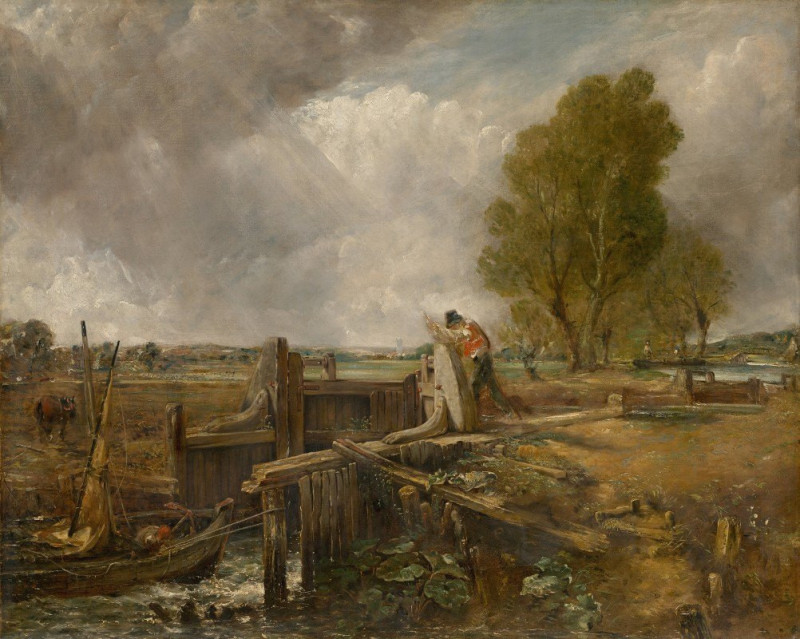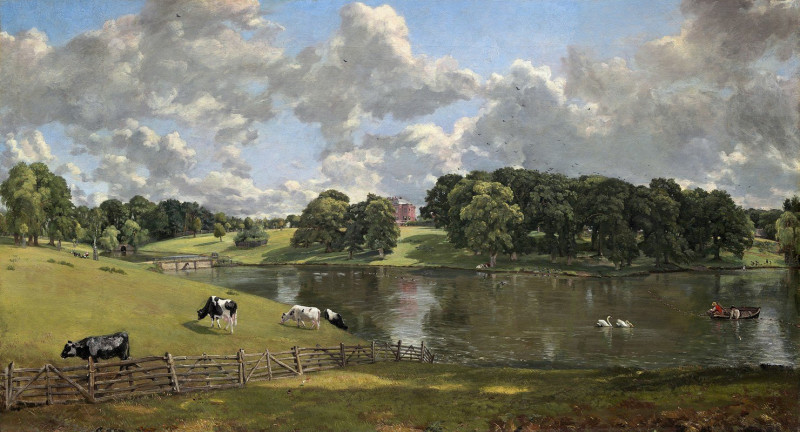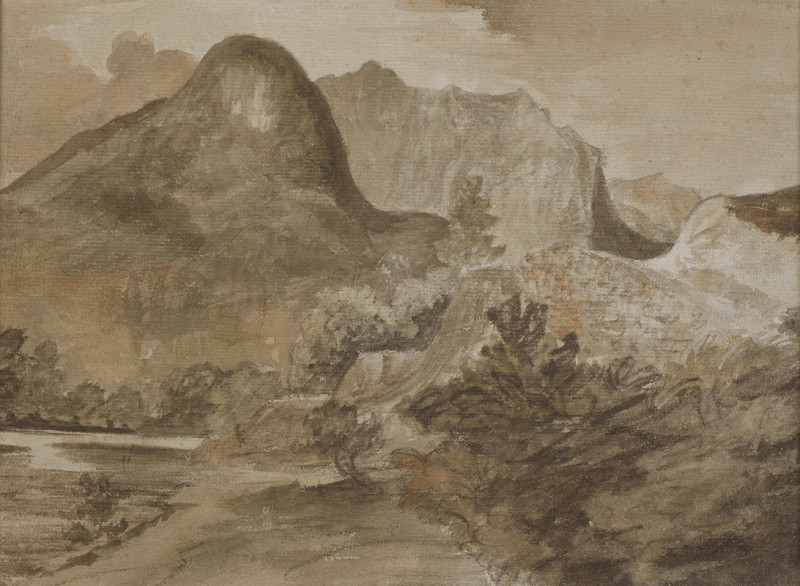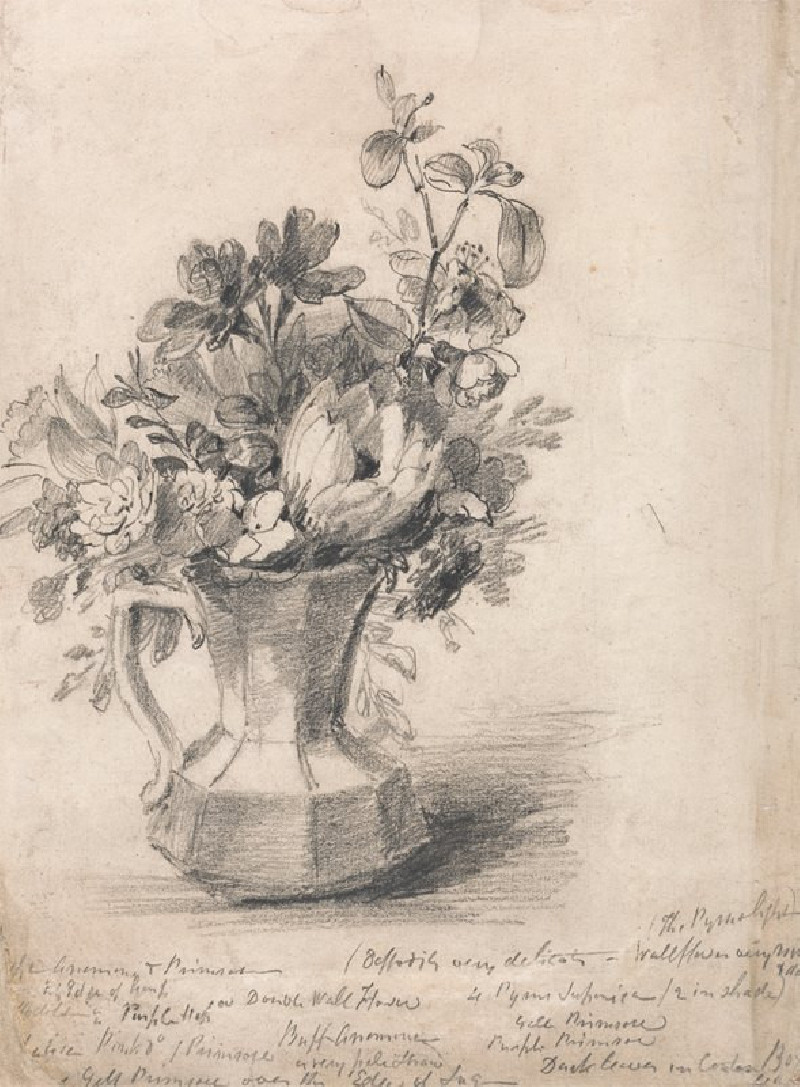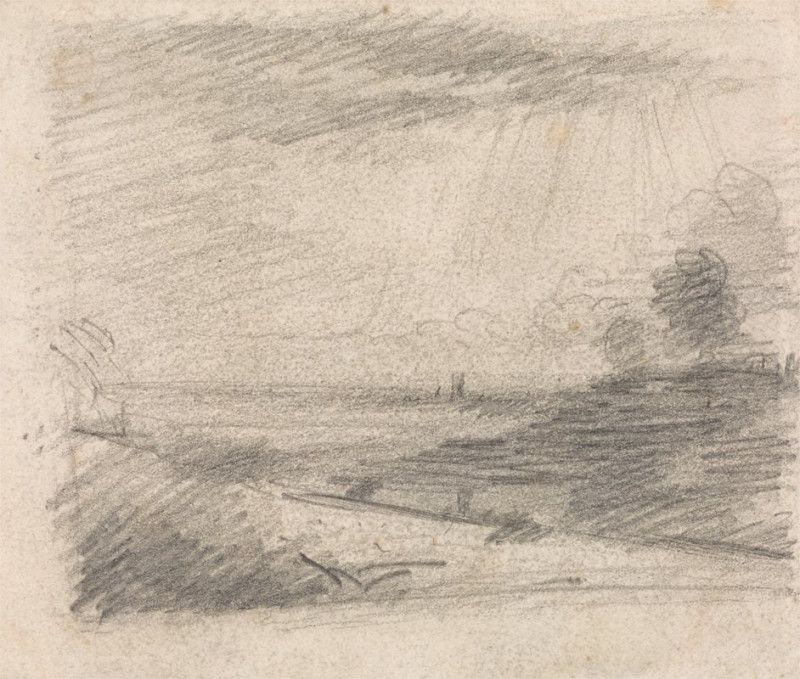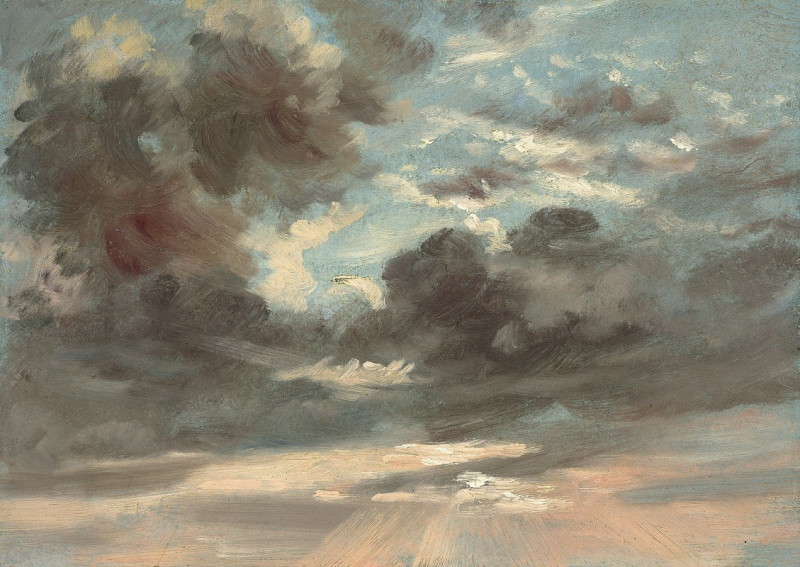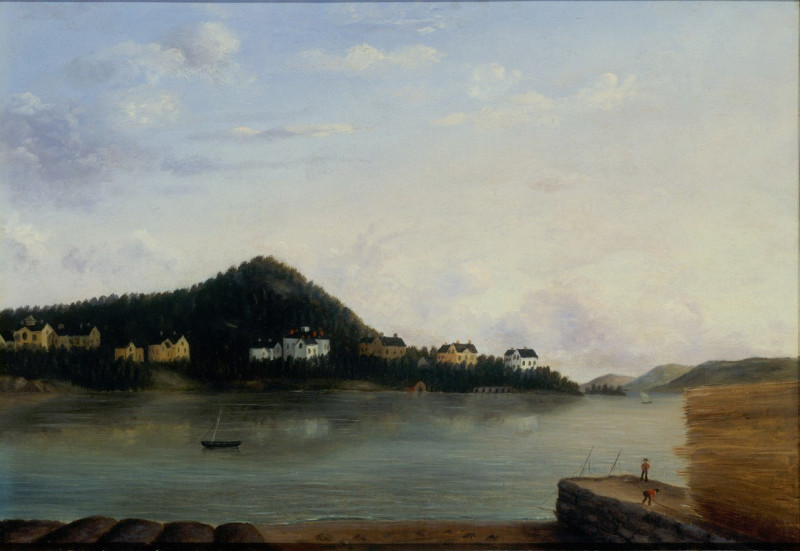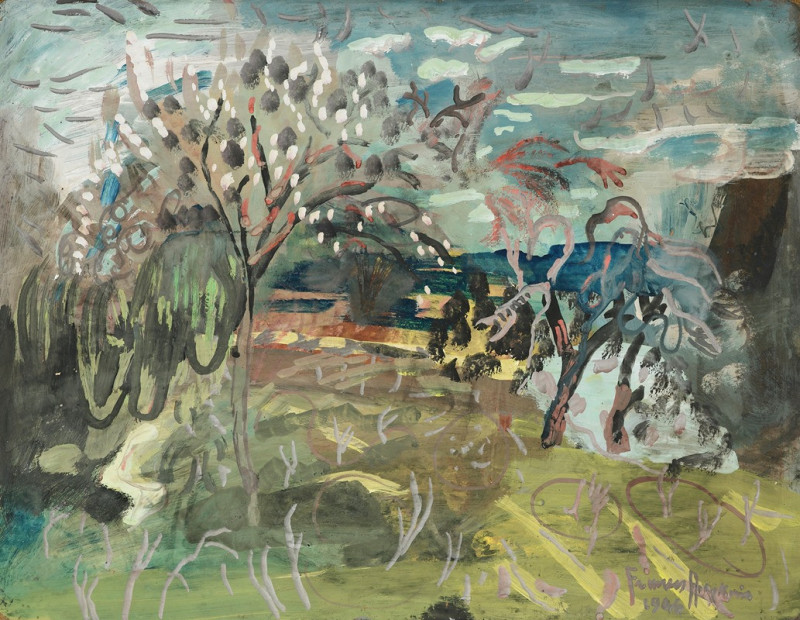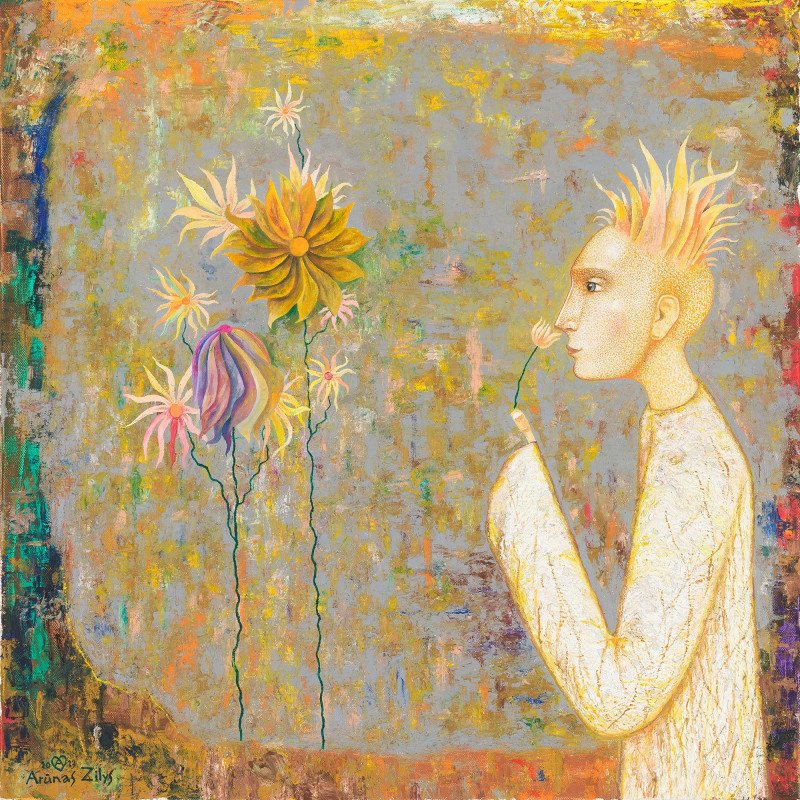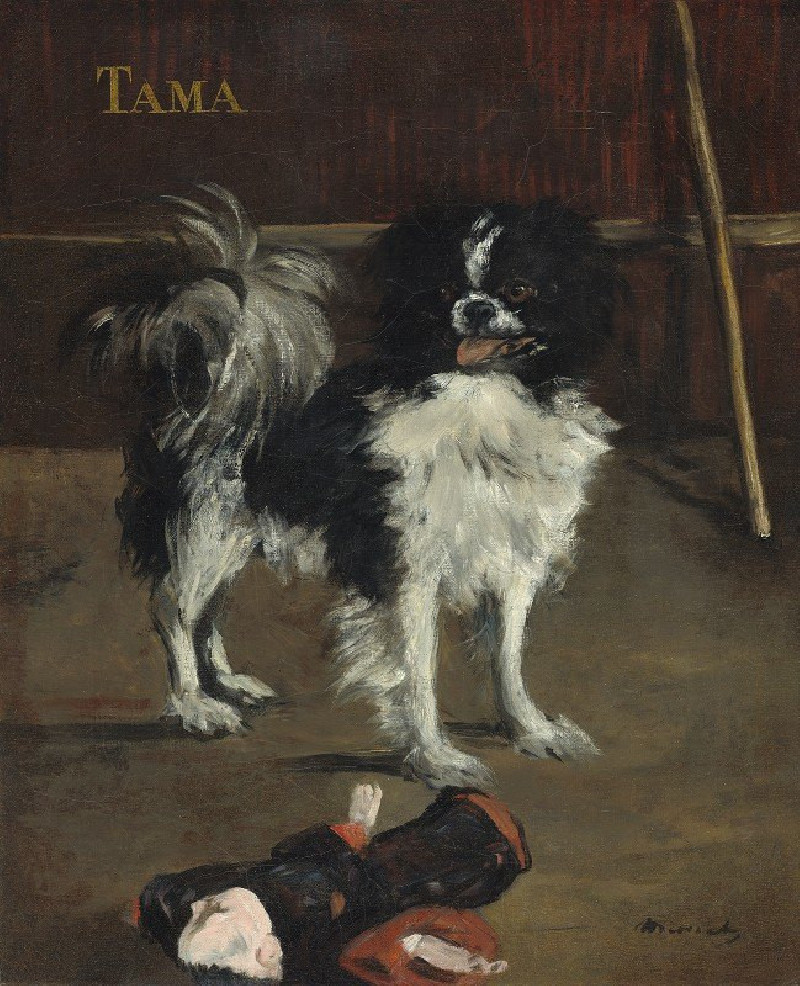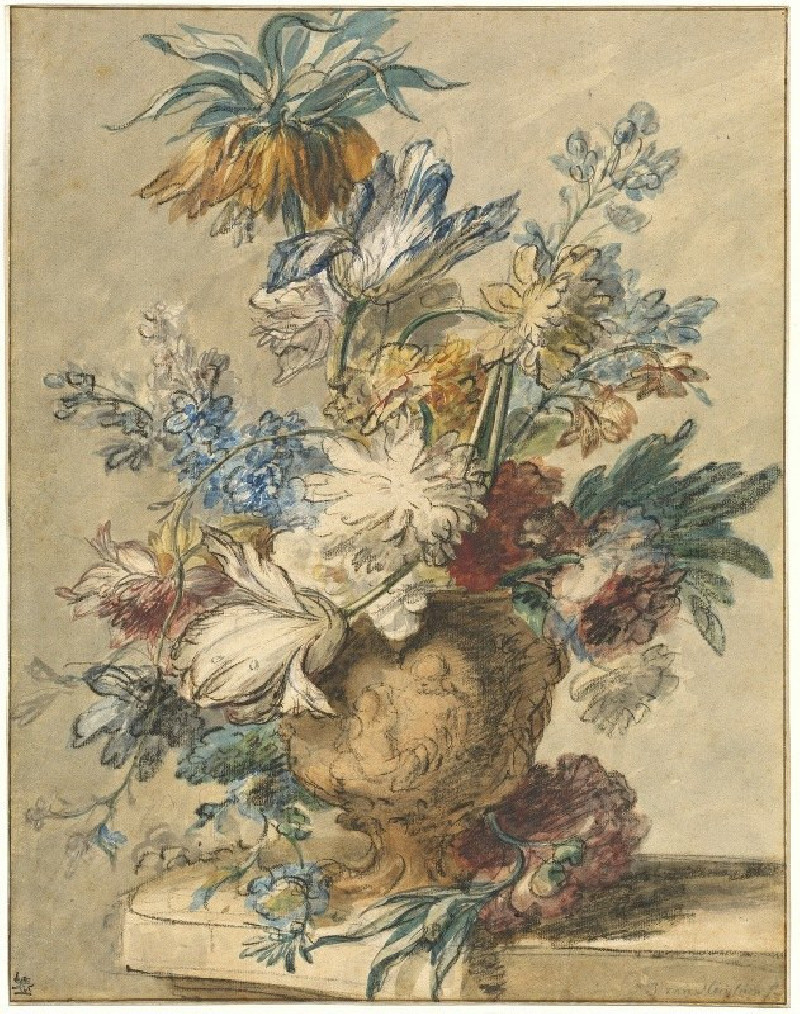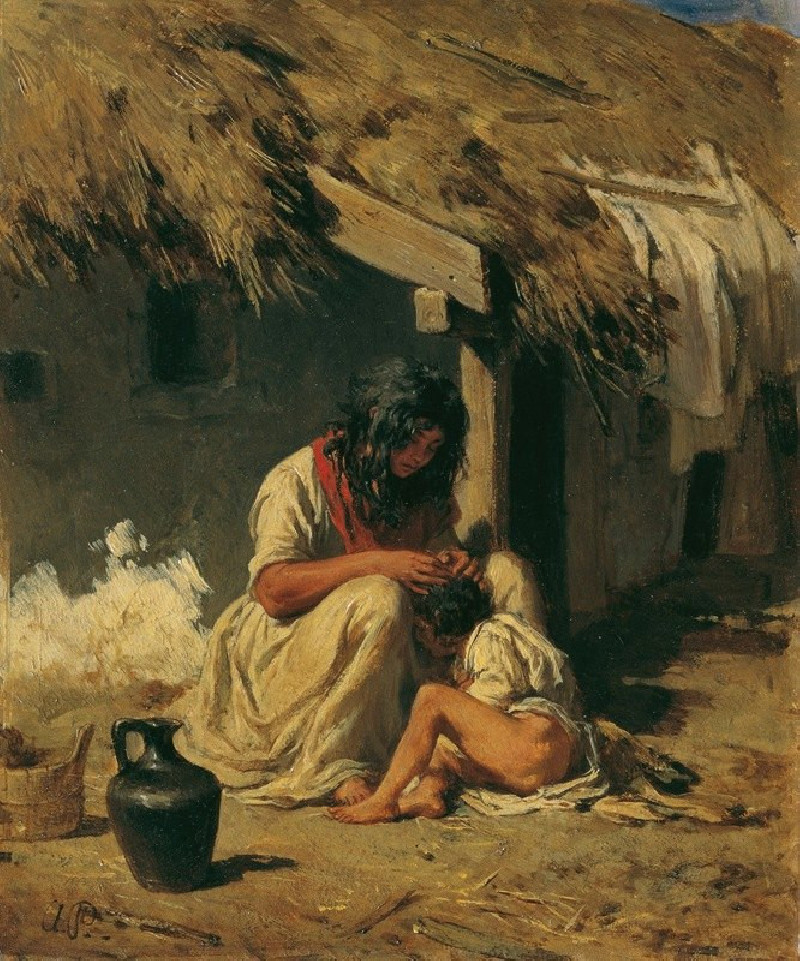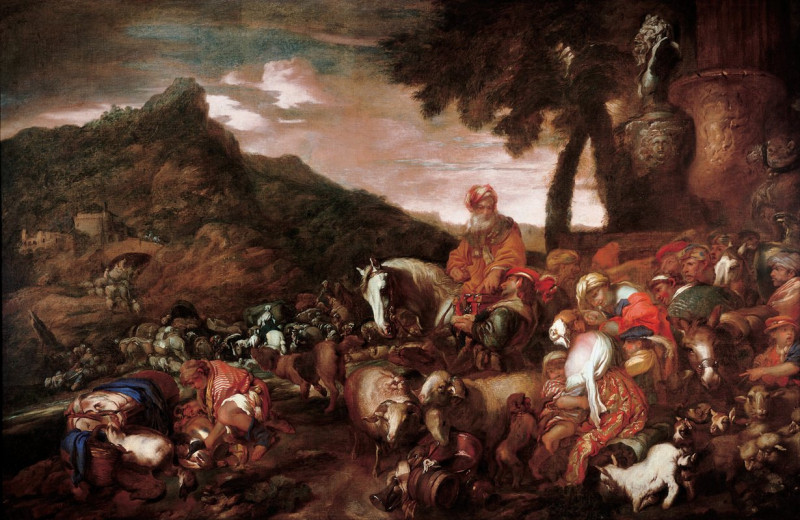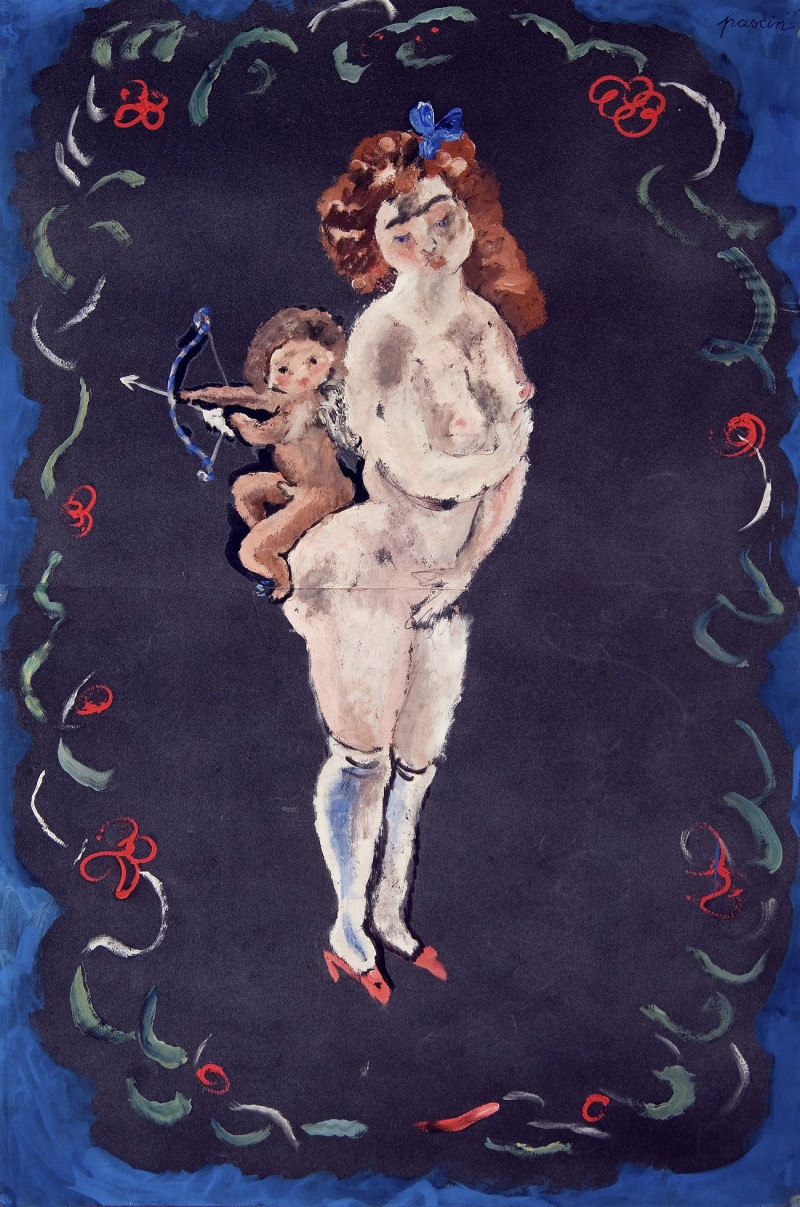Fulham Church from across the River (1818)
Technique: Giclée quality print
Recommended by our customers
More about this artwork
In the delicate sketches of John Constable, "Fulham Church from across the River" emerges as a masterpiece of tranquility and natural beauty, encapsulating the quintessence of English landscape art in the early 19th century. Dated 1818, this exquisite piece invites viewers into a serene depiction of the Thames' banks, foregrounded by the gentle flow of the river and backgrounded by lush vegetation and the iconic Fulham Church.At the heart of the composition stands the church, its spire piercing the sky, serving not only as a religious landmark but also as a focal point that draws the eyes and minds of viewers, suggesting the spiritual and historical permanence amidst the transience of nature. The artist’s use of fine, detailed strokes to portray the church and the surrounding trees highlights his meticulous attention to texture and form.The foreground of the painting is dominated by the calm, reflective waters of the Thames, where small boats gently drift, suggesting a moment captured in everyday rural life. The reflections on the water not only mirror the physical elements but also evoke a sense of peace and contemplation.The sky, though sketched with broad and dynamic strokes, shelters the scene with a canopy of clouds, contributing to the overall atmosphere of a typical English day, poised between tranquility and the dynamic shifts of nature." Fulham Church from across the River" is a testament to John Constable's mastery in portraying the harmonious coexistence of man, architecture, and nature. This artwork remains a significant piece not only for its aesthetic appeal but also for offering a window into the pastoral landscapes that are so iconic in Constable’s body of work.
Delivery
Returns
John Constable RA was an English landscape painter in the Romantic tradition. Born in Suffolk, he is known principally for revolutionising the genre of landscape painting with his pictures of Dedham Vale, the area surrounding his home – now known as "Constable Country" – which he invested with an intensity of affection. "I should paint my own places best", he wrote to his friend John Fisher in 1821, "painting is but another word for feeling".


